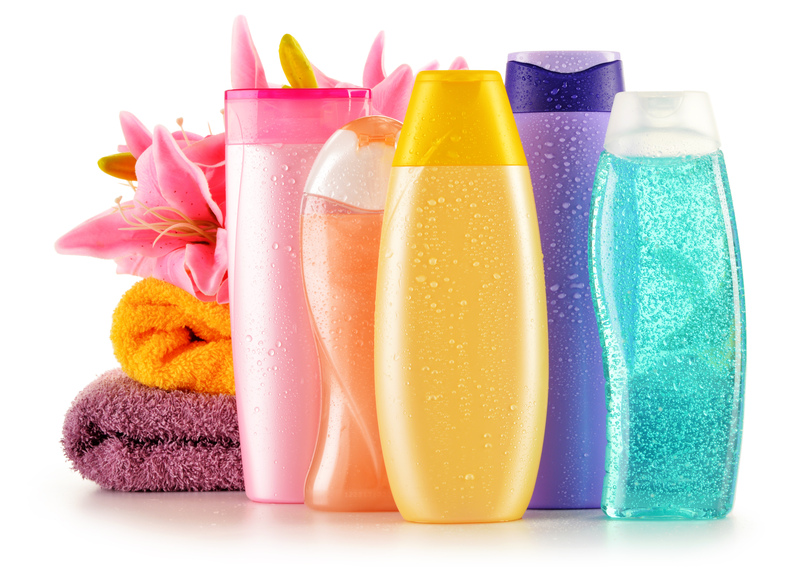Master the Art of Efficient Window Cleaning Techniques
Crystal-clear windows not only brighten your space but also leave a lasting impression on guests, clients, and even yourself. Yet, many overlook the science and skill it takes to achieve spotless, streak-free panes. In this comprehensive guide, we'll show you how to master the art of efficient window cleaning techniques--ensuring sparkling results with less time and effort. Whether you are a homeowner, professional cleaner, or simply enjoy a gleaming view, these expert tips and methods will change the way you look at window maintenance forever.
Why Window Cleaning Matters
Clean windows are more than just an aesthetic choice. They impact energy efficiency, improve your view, and elevate home and office environments. Dirty windows can reduce the amount of natural light entering a room, potentially impacting mood and productivity. Moreover, accumulated dirt and grime can even damage glass over time, making routine cleaning essential.
- Boosts Curb Appeal: Sparkling windows enhance the visual appeal of any property.
- Improved Health: Clean windows reduce allergens, mold spores, and dust.
- Extended Lifespan: Regular maintenance prevents etching and corrosion.
- Energy Efficiency: Clear glass lets more sunlight in, reducing the need for artificial lighting.
Avoid Common Pitfalls
Neglecting your windows can lead to:
- Permanent stains or streaks
- Damaged window seals
- Mold growth
- Poor visibility
Mastering rapid and thorough window cleaning methods will help you avoid these common problems while maximizing efficiency.
Gather the Right Tools for Efficient Window Cleaning
Just like any craft, efficient window cleaning starts with the proper tools. The following equipment will accelerate your workflow and produce professional-grade results:
Essential Window Cleaning Tools
- Squeegee: For streak-free drying
- Microfiber cloth: Gentle on glass, grabs fine particles
- Bucket: For soap and water mixture
- Window scrubber or sponge: Loosens dirt
- Extension pole: Perfect for high or hard-to-reach windows
- Soft brush: For frames and screens
- Quality cleaning solution: Commercial or homemade
- Protective gloves: To safeguard your hands
- Ladder (if necessary): For multi-story jobs
Choosing the Best Window Cleaner Solution
Not all cleaning agents are created equal. For effective window washing techniques, always use a non-abrasive, streak-free solution. Here are some recommendations:
- Commercial glass cleaners: Formulated for minimal streaking
- DIY Solution: Mix 1 part white vinegar with 3 parts water and a drop of dish soap for an eco-friendly alternative.
Remember to avoid harsh chemicals that can damage window seals or finishes.
Preparing for an Efficient Window Cleaning Session
Preparation is a significant factor in time-saving window washing methods. Efficient cleaning starts even before the first swipe:
Preparation Steps
- Check the weather: Choose an overcast or mild day--direct sunlight can cause drying too quickly and may leave streaks.
- Remove window screens: Gently brush them to remove dirt and set aside to clean them separately.
- Protect the area: Place towels or old sheets beneath the window to catch drips.
- Dust frames and sills: Use a soft brush or vacuum. This step prevents dirt from mixing with your cleaner and forming mud.
With the right tools and preparation, you've set the stage for mastering fast window cleaning techniques.
Step-by-Step Efficient Window Cleaning Techniques
Step 1: Wet the Glass
Dip your scrubber or sponge into the cleaning solution and wring out excess liquid. Starting from the top corner, work your way down, gently agitating and lifting grime. Always overlap motions to ensure thorough coverage.
Step 2: Scrub Stubborn Spots
For spots or sticky residue (like tree sap), gently use a non-abrasive pad or a specialized scraper designed for glass. Never use razor blades on tempered glass to avoid permanent scratches.
Step 3: Squeegee Technique
This step marks the difference between amateur and expert results. Follow these efficient squeegee methods for zero streaks:
- Start at the top left corner (for right-handed cleaners) or top right (for left-handed cleaners).
- Pull the squeegee in a continuous horizontal stroke, overlapping each line slightly.
- Wipe the squeegee blade with a microfiber cloth after each pass for maximum efficiency.
- For tall windows, use a reverse "S" pattern, which reduces missed spots and increases speed.
Step 4: Dry and Detail
Use a clean, dry microfiber cloth to remove excess water and detail the edges and window sills. This ensures a streak-free finish and prevents unsightly drip marks.
Step 5: Clean Window Screens and Frames
- For screens, rinse with a hose or use a gentle soap solution and soft brush.
- Frames should be wiped down with a damp cloth--don't oversaturate wood or aluminum frames to avoid damage.
Advanced Window Cleaning Techniques for Maximum Efficiency
Ready for commercial-level speed and finish? Try these proven tricks:
- Use two buckets: One for soapy water, one for rinsing. This keeps dirt from transferring back to the glass.
- Polish with newspaper: The slight abrasiveness of newsprint, combined with its absorbency, delivers a gleaming finish.
- Employ telescopic tools: Professional-grade extension poles give access to high windows without a ladder.
- Soap Control: Too much soap can leave residue. Use the smallest effective amount for your solution.
- Blade Maintenance: Replace squeegee blades regularly--dull blades equal streaks.
- Speed up drying: In humid conditions, run a fan nearby to accelerate drying and prevent streak formation.
Speed Cleaning Tips
- Work in pairs: One washes, one dries. Ideal for commercial settings.
- Clean regularly: The more frequent the cleaning, the less buildup, meaning each session becomes faster and easier.
- Organize your tools: Keep everything within arm's reach using a utility belt or caddy.
Eco-Friendly & Safe Window Cleaning Practices
If you're environmentally conscious or have children and pets, prioritize natural window cleaning solutions and practices:
- Vinegar and Water: As noted earlier, a 3:1 mix is powerfully effective as a window washing solution.
- Avoid paper towels: Use washable microfiber cloths to reduce waste.
- Choose non-toxic glass cleaner options for indoor cleaning.
Always ventilate the area well, wear gloves, and ensure children or pets are kept away from potentially slippery wet floors.
Window Cleaning for Different Types of Windows
Not all windows are created equal. Learn how to customize your approach to maximize your efficiency:
- Single or Double-Hung Windows: Tilt sashes inward for easy interior cleaning.
- Picture Windows: Often large and stationary, so use long-handled tools for reach.
- Storm Windows: Remove the storm pane before cleaning both glass pieces.
- Bay or Bow Windows: Tackle one panel at a time, working from the center out.
- Skylights: Use a telescopic squeegee and, if possible, clean from inside to avoid rooftop hazards.
Window Cleaning Frequency & Best Practices
How often should you clean your windows?
Residential: Every 2-3 months for most homes. High-traffic or urban areas may require monthly cleaning.
Commercial: Monthly or even weekly for businesses, especially those at street level.
Tip: Schedule cleanings at the start of a season to maximize the benefit as the weather changes.
Pro Maintenance Tips
- Inspect seals and caulking: Catch issues early before water infiltration occurs.
- Rotate curtain or blind positions: Reduces uneven fading and keeps glass exposed to light.
- Spot clean immediately: Promptly address bird droppings, sap, or smudges.
- Keep exterior landscaping trimmed: Reduces pollen and leaf buildup on glass.
Troubleshooting Common Window Cleaning Problems
- Streaks after washing? You may be using too much cleaner or not wiping the squeegee blade between strokes.
- Spotty glass? Rinse your tools more frequently and detail edges where water collects.
- Cloudy appearance? Mineral deposits from hard water may require a special remover or mixture with a bit of rubbing alcohol.
- Windows fog up? Clean both sides and ensure proper ventilation.
The key to effective window cleaning is continuous improvement--adjust your technique based on the specific conditions and window types you encounter.
Summary & Key Takeaways
- Start with quality tools and a proven window cleaning solution.
- Work from top to bottom, wet to dry, inside and out.
- Master squeegee technique for truly streak-free windows.
- Detail the edges, clean screens and frames, and polish as needed.
- Adopt eco-friendly and safe practices for best results.
- Customize your method for every window type and size.
Window cleaning doesn't have to be a dreaded chore. With these pro techniques for efficient window cleaning, you'll save time, achieve professional-grade results, and enjoy the full beauty and brightness of your living or workspace. Practice these methods regularly, and soon, keeping your windows gleaming will feel effortless--making your home or business shine brighter than ever!
Frequently Asked Questions (FAQ) about Efficient Window Cleaning Techniques
Q1: What's the best window cleaner for streak-free glass?
- Commercial glass cleaners or a vinegar and water mix are the most effective for streak-free results.
Q2: Is it better to clean windows on a sunny or cloudy day?
- Clean on cloudy days or during mild weather; sunlight dries the cleaner too quickly and can leave streaks.
Q3: How can I reach tall or high windows safely?
- Use an extension pole with a squeegee and scrubber. For very high panes, consider hiring professionals with safety gear.
Q4: How do professionals clean windows quickly?
- Professionals prep their area, use quality tools, perfect the squeegee technique, and work systematically from top to bottom--often using tandem cleaning teams.
Ready to elevate your window cleaning routine? Try out these strategies and see the transformation for yourself. Clean windows, more light, and a beautiful view are just a few swipes away when you master the art of efficient window cleaning techniques.




